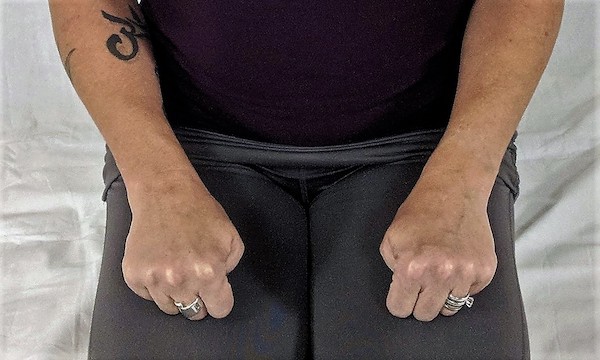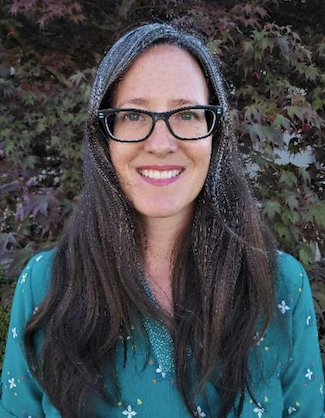
Practices for Challenging Times
Originally posted August 30, 2021
by Tanya Gita Roberts
As I sit down to write out some musings for this month’s newsletter, I am filled with immense gratitude for this community and our beloved teacher, Baba Hari Dass. Many of you attended the online ACYR this year. This sweet event still inspires me weeks later. I am so grateful for the stories, the joy, the love, the compassion, and the connection that was so readily shared.
The following musings were inspired by a question from one of the tea time chats during the ACYR. I can’t remember the exact question but it went something like this: “what are your go-to practices when you get uncomfortable?” Like me, I’m sure that many of you have experienced discomfort over the last eighteen months and have used your sadhana, along with Babaji’s teachings and wisdom, to help you connect with the calm or peace in your heart during these interesting times.
August 14, 2021 marked ten years since I graduated from the SSCY 200 hour Yoga Teacher Training Program. I have been involved with this community for a decade now and yet it feels like it was just yesterday that I arrived on the land for the very first time. I remember being dropped off at the Centre by my partner, not knowing what to expect and knowing that this program was going to change my life, which it did. The greatest gift that I received from that YTT and Babaji is Regular Sadhana. Every time I sit on my cushion, I can feel my connection to Babaji, to Creator, and to all of you – and my sufferings slip away while I chant, breathe, and meditate. Sometimes I pick those sufferings up again after sadhana and sometimes I don’t.
The last couple of weeks have been very challenging for me. The fires burning in BC, the unjust situation at Fairy Creek and the resurgence of the Taliban in Afghanistan have all weighed heavily on my mind. In the midst of all of this, the question from ACYR keeps popping up and reminds me that I have the tools to reduce my suffering and the peace I am looking for is present within.
The first four sutras of the Yoga Sutras of Patanjali have also served as reminders. The translations below are based on Babaji’s translation of these teachings.
Sutra 1.1: Now the teachings of yoga are being explained.
When I contemplate this sutra, I see the importance of now, the importance of the present moment. In Everyday Peace: Letters for Life on page 20, Babaji wrote “If the present is passing in peace, it will make a peaceful past and sow a seed of peace to grow in the future…the present moment is the most important thing in life, but we forget the present and either dwell in the past or worry about the future. When I am enmeshed in suffering, I am not in the present. This is a pointer to me to use the tools in my yoga tool belt to help me get present (more on this in a little bit).
Sutra 1.2: Control of the thought waves in the mind is yoga.
Sutra 1.3: Then [when the thought waves are controlled] the seer is established in their own true nature.
Sutra 1.4: In other states [when the seer is not established in their true nature], the seer appears the same as the thought waves in the mind.
In his commentary on Sutra 1.1, Babaji notes Sutra 1.2 is the cure for dis-ease or suffering, Sutra 1.3 is the definition or state of health, and Sutra 1.4 is the illness or the state of suffering.
This commentary resonates with me based on my own experience. When I am not in the present, my mind is not calm and I identify with the thoughts, emotions, sensations, etc. Suffering happens. Regular sadhana and the self-study or svadhyaya that comes with regular practice, allows me to observe that there is suffering and that misidentification is taking place. When I notice this, I have a choice. Do I allow the suffering to continue? Or do I use the tools in my yoga tool belt to calm the mind, so that I can look at things with discernment, compassion, and wisdom? I know from experience what happens when I use the tools – the mind calms and I am able to connect with the peace in my heart.
Here are some of my go-to practices to help me when I am off the cushion and I notice that I am not present or connected to the peace in the heart. All of these can be very effective for cultivating present moment awareness and calming the mind.
Simple Breath Awareness
This is the first thing I do whenever I feel overwhelmed, anxious, or uncomfortable. It works like a charm to bring me into the present moment.
Breathe in and out through the nose. Notice the touch of breath and the expansion of your belly as you inhale. Feel the touch of breath and the hollowing of your belly as you exhale.
I like to pair this with a simple mantra from Thich Nhat Hanh – “Breathing in, I know that I am breathing in. Breathing out, I know that I am breathing out”. This can be shortened to “In. Out.”
Notice your feet
In my body, suffering often shows up as anxiety or whirling spinning thoughts that make it hard for me to concentrate on anything. All my attention and awareness is up beyond my head. When I notice this, I pause and bring awareness and attention down into my feet. This brings my attention and awareness back into my body and slows the pace of the thoughts. It helps bring me back to the present moment.
Notice how the feet touch the floor. Imagine that you are making a footprint in some soft sand or cushy green grass. Connect with the steadiness and the stability of the earth beneath the feet. If you have massage or tennis balls nearby, you could try rolling the balls beneath the feet to release tension and to help ground and centre yourself.
Dirga Rechak
This is a practice that I use frequently, especially when I feel overwhelmed. I practice it sitting, standing, walking, and even lying down. This is another practice that quickly brings me into the present moment.
Breathe in through the nose. Exhale through the nose – as long, smooth, and slow as possible. The breath out is so subtle that if you had a feather beneath your nose it would not be ruffled or disturbed by the breath. Repeat several times.
These long slow exhales provide space for thoughts, emotions, sensations, etc to spread out and dissipate. It can be a very grounding and calming practice.
Simplified Brahmari
This is a technique I learned during my Yoga Therapy training. It is a little different than the version that Babaji taught. This is one of my favourite tools for self-soothing and for falling back to sleep if I wake up in the middle of the night. I practice this sitting, standing, walking, and lying down.
Inhale through the nose. Exhale through the nose as you make a humming sound (like the “mmmmm” at the end of Om). Repeat several times. After the last repetition, pause and rest in the vibration of the practice.
Adhi Mudra – Gesture of Primordial Stillness

This is a hand gesture that can be very helpful for working with anxiety. It can help instill a sense of grounding and security (Le Page 2014, p. 40 – 41). It is very calming and can lower blood pressure. If you have low blood pressure, hold for a short time only and carefully monitor the effects.
You can use this gesture sitting, standing and lying down.
Tuck the thumbs into the palms of the hands and curl the other fingers loosely around the thumbs. This will create a soft, relaxed fist. Place the hands on the thighs with the palms facing down.
I often pair this hand gesture with Simple Breath Awareness, Dirga Rechak and Simplified Brahmari.
Next time you feel overwhelmed, give one of these tools a try.
Leave a comment and share what some of your go-to practices are.
References
Everyday Peace: Letters for Life. Baba Hari Dass. 2000. Sri Ram Publishing.
The Yoga Sutras of Patanjali. A Study Guide for Book 1. Baba Hari Dass. 1999. Sri Ram Publishing.
Mudras for Transformation and Healing. Joseph and Lilian Le Page. 2014. Integrative Yoga Therapy

Tanya Gita Roberts, E-RYT 500; C-IAYT
Gita began practicing yoga in 2000 and is a graduate of the 200 hour Yoga Teacher Training at the Salt Spring Centre of Yoga. She has been teaching since 2011. She has completed the 500 hour Teacher Training at Mount Madonna and the 800 hour Yoga Therapy Program at Ajna Yoga College. She is a certified Yoga Therapist (C-IAYT) through the International Association of Yoga Therapists. Gita has been a faculty member of the 200 hour YTT program at SSCY since 2016.
Gita is passionate about creating a safe, compassionate, inclusive space that welcomes every body. Her gentle approach utilizes movement, breath, meditation, and philosophy to cultivate deep inner connection and overall well-being. She facilitates private sessions and public classes in Victoria and online.
To discover more about Gita visit: www.divinesongyoga.com
To learn more about the Salt Spring Centre of Yoga YTT-200 program, visit our Yoga Teacher Training page.
If you are interested in deepening your sadhana practice, join our Going Deeper Silent Retreat each fall.
